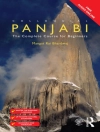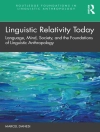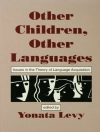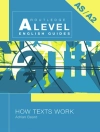In a new era of global conflict involving non-state actors, At War with Words offers a provocative perspective on the role of language in the genesis, conduct and consequence of mass violence. Sociolinguistics meets political science and communication studies in order to examine interdependence between armed conflict and language. As phenomena attributed only to humans, both armed conflict and language are visible on two axes: language as war discourse, and language as a social policy subject to change by the victorious.
In this unique volume, internationally known contributors provide original data and new insights that illuminate roles of text and talk in creating identities of enemies, justifications for violence, and accompanying propaganda. Incorporating contexts from around the world, this collection’s topics range from a radio talk show hosts’ inflammatory rhetoric to the semantic poverty of the lexicon of mass destruction. The first eight chapters discuss war texts. How does language serve as a vehicle to incite, justify, and resolve an armed conflict? Case studies from the US to China, and from Austria to Ghana detail such a progression to, through, and from war. The book’s second part reflects the understanding of language as a symbol of power achieved by a victorious side in war. Five chapters discuss cases from Okinawa, Croatia, Cyprus, Palau, and Northern Ireland.
Edited by a sociolinguist and a political scientist, At War with Words includes chapters by Michael Billig, Paul Chilton, Ruth Wodak and a dozen other prominent linguists and communications scholars. This book will be of interest to linguists, media scholars and political scientists, but is also accessible to any reader interested in language and war. Teachers will find particular chapters useful as course material in discourse analysis, language policy, war and peace studies, conflict resolution, mass communication, and other related disciplines.
Tabla de materias
Michael Billig: Preface: Language as forms of death
Mirjana N. Dedaić: Introduction: A peace of word
I. War Discourse
Kathryn Ruud: Liberal parasites and other creepers: Rush Limbaugh, Ken Hamblin, and the discursive construction of group identities
Suzanne Wong Scollon: Threat or business as usual? A multimodal, intertextual analysis of a political statement
Paul Chilton Deixis and Distance: President Clinton’s Justification of Intervention in Kosovo
Robert E. Tucker and Theodore O. Prosise: The language of atomic science and atomic conflict: Exploring the limits of symbolic representation
Kweku Osam: The politics of discontent: A discourse analysis of texts of the reform movement in Ghana
Alexander Pollak: When guilt becomes a foreign country: Guilt and Responsibility in Austrian postwar media-representation of the Second World War
Gertraud Benke and Ruth Wodak: Remembering and forgetting: THE discursive construction of generational memories
II. Language wars
Keith Langston and Anita Peti-Stantić: Attitudes towards linguistic purism in Croatia: Evaluating efforts at language reform
Rumiko Shinzato: Wars, politics, and language: A case study of the Okinawan language
Kazuko Matsumoto and David Britain: Language choice and cultural hegemony in the Western Pacific: Linguistic symbols of domination and resistance in the Republic of Palau
Marilena Karyolemou: ‘Keep your language and I’ll keep mine’: Politics, language, and the construction of identities in Cyprus
Renée Dickason: Advertising for peace as political communication
Mark Allen Peterson: American warriors speaking American: The metapragmatics of performance in the nation state
Daniel N. Nelson: Conclusion: Word peace
Sobre el autor
Mirjana N. Dedaić is affiliated with Georgetown University, Washington DC, USA.Daniel N. Nelson is Dean of Arts and Sciences at the University of New Haven, Connecticut, USA.












